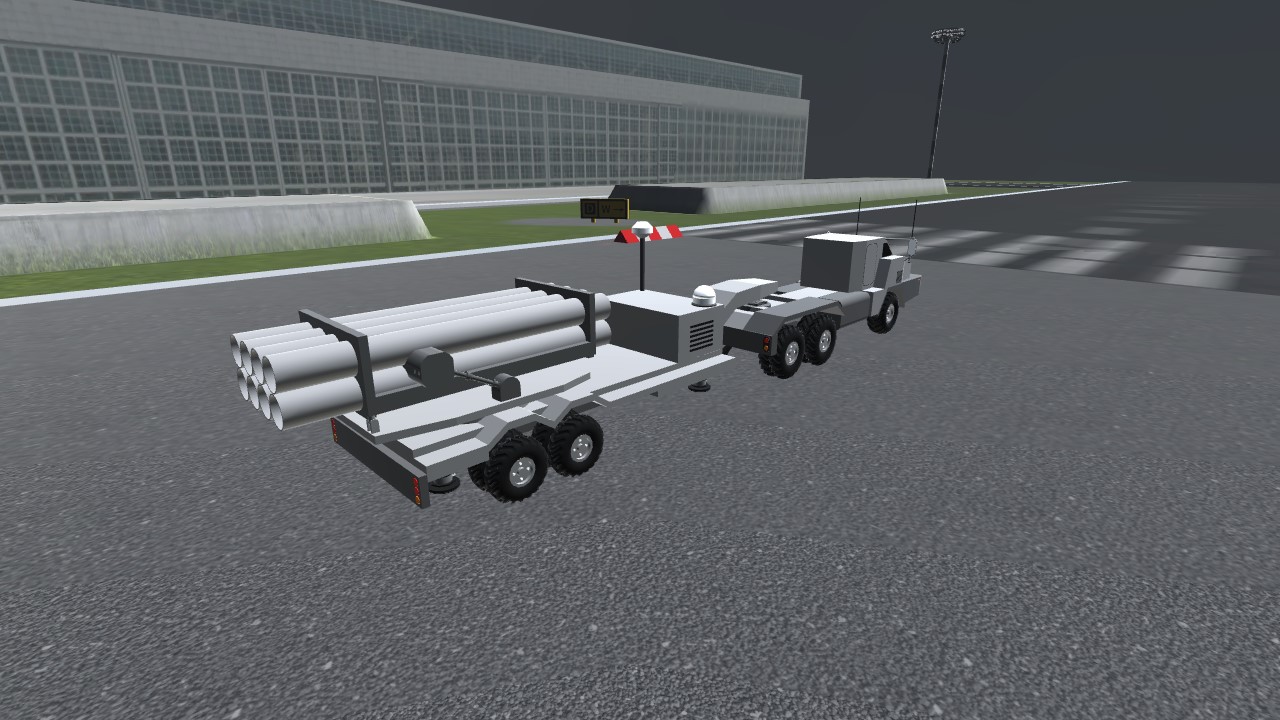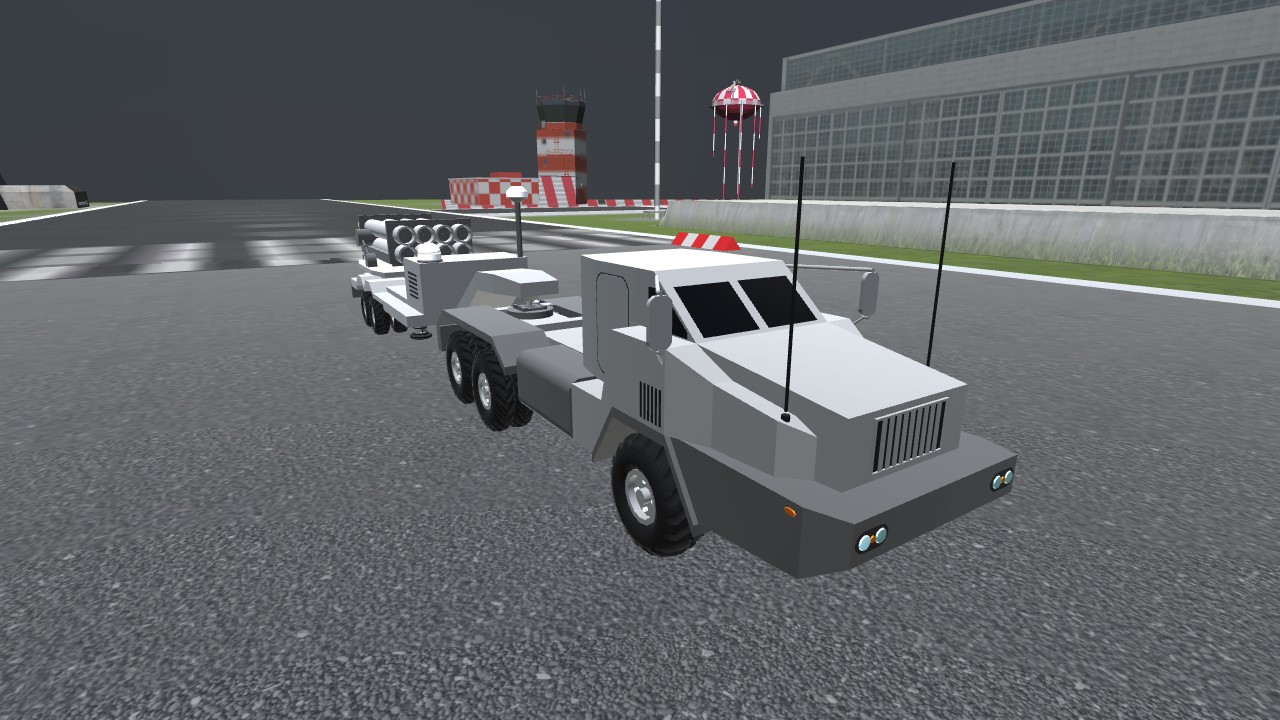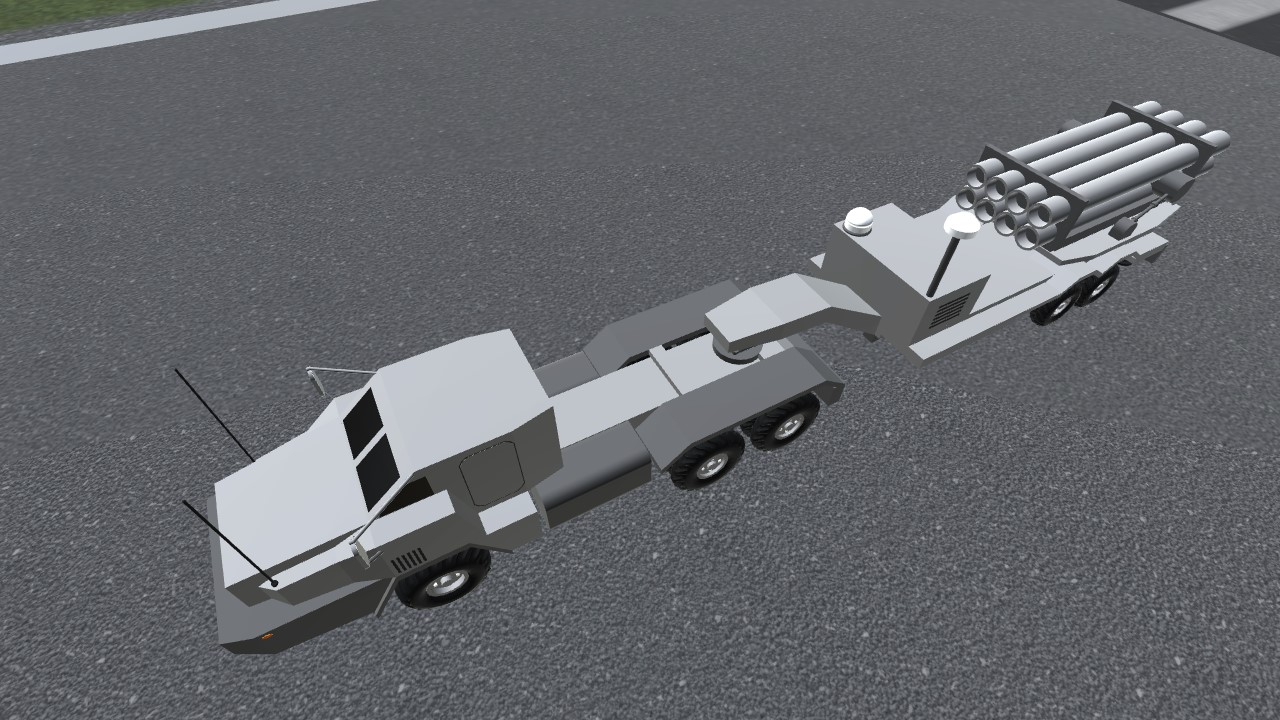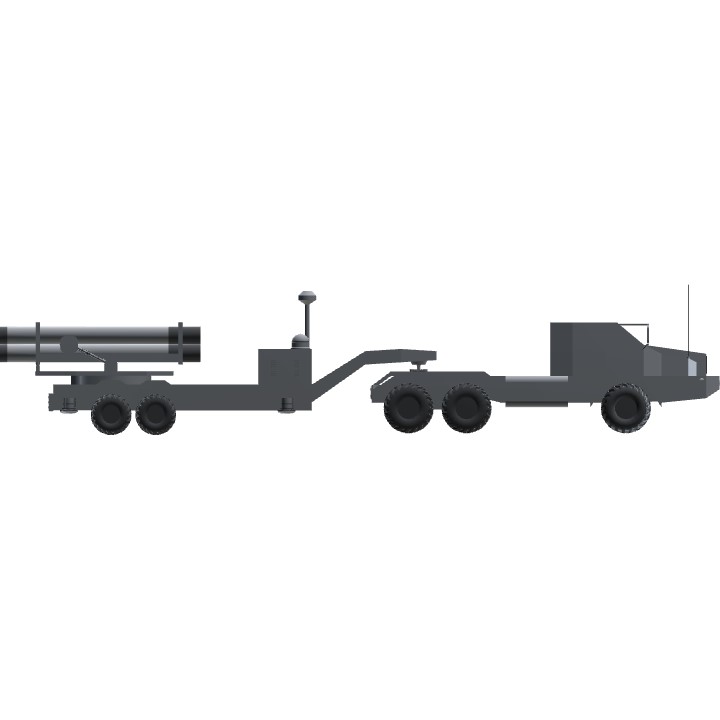M451 (6x6) Missile Interception System, Mobile-76 / Terminal High-Altitude Area Defense, Extended Range
The MISM-76 Terminal High-Altitude Area Defense System, Extended Range is a missile system developed to intercept anything from aircraft to hypersonic MIRVs and kinetic penetrator rods.
Controls:
AG1 to toggle stabilizers,
AG6, AG7 for turn signals,
AG8 to toggle headlights,
VTOL to elevate missile launcher,
pitch for drive, yaw for steering.
"Terminal High Altitude Area Defense (THAAD), formerly Theater High Altitude Area Defense, is an American anti-ballistic missile defense system designed to shoot down short-, medium-, and intermediate-range ballistic missiles in their terminal phase (descent or reentry) by intercepting with a hit-to-kill approach.[2][3] THAAD was developed after the experience of Iraq's Scud missile attacks during the Gulf War in 1991.[4] The THAAD interceptor carries no warhead, but relies on its kinetic energy of impact to destroy the incoming missile. A kinetic energy hit minimizes the risk of exploding conventional-warhead ballistic missiles, and the warhead of nuclear-tipped ballistic missiles will not detonate upon a kinetic-energy hit.
Originally a United States Army program, THAAD has come under the umbrella of the Missile Defense Agency. The Navy has a similar program, the sea-based Aegis Ballistic Missile Defense System, which also has a land component ("Aegis ashore"). THAAD was originally scheduled for deployment in 2012, but initial deployment took place in May 2008.[5][6] THAAD has been deployed in Guam, the United Arab Emirates, Israel, and South Korea.
The vulnerability and lethality analyses of the THAAD have been conducted by the U.S. Army Research Laboratory (ARL). The vulnerability assessment for the THAAD featured an evaluation of the effects of major electromagnetic elements. This included EM interference, EM radiation operations, EM radiation hazards, EM pulse, electrostatic discharge, and lightning effects on components of the THAAD system.[7]
The ARL assessments were designed to determine the THAAD system's growth potential given its tactical design as well as provide survivability analysis against threats such as conventional weapons, chemical weapons, and electronic warfare countermeasures.[8] The data collected from the analyses were used to develop trajectory models for targets and missile as well as target trajectories using infrared scene generation of infrared countermeasures (IRCMs).[7]
The THAAD system is being designed, built, and integrated by Lockheed Martin Missiles and Fire Control acting as prime contractor. Key subcontractors include Raytheon, Boeing, Aerojet Rocketdyne, Honeywell, BAE Systems, Oshkosh Defense, and MiltonCAT.[9]" (Wikipedia).
"Lockheed is pushing for funding for the development of an extended-range (ER) version of the THAAD to counter maturing threats posed by hypersonic glide vehicles that adversaries may deploy, namely the Chinese WU-14, to penetrate the gap between low- and high-altitude missile defenses. The company performed static fire trials of a modified THAAD booster in 2006 and continued to fund the project until 2008. The current 14.5 in (37 cm)-diameter single-stage booster design would be expanded to a 21 in (53 cm) first stage for greater range with a second "kick stage" to close the distance to the target and provide improved velocity at burnout and more lateral movement during an engagement. Although the kill vehicle would not need redesign, the ground-based launcher would have only five missiles instead of eight. As of early 2015, THAAD-ER is only an industry concept, but Lockheed believes that the Missile Defense Agency will show interest because of the weapons under development by potential adversaries.[36] If funding for the THAAD-ER begins in 2018, a system could be produced by 2022 to provide an interim capability against a rudimentary hypersonic threat. The Pentagon is researching whether other technologies like directed energy weapons and railguns are better solutions for missile defense; these are expected to become available in the mid to late 2020s.[37]" (Wikipedia).
The missile system has a flight ceiling of over 150km, and a top speed of over Mach 8.24 (not replicated here in SP). The missile is a hit-to-kill system.
The actual MISM-76 THAAD-ER is the trailer assembly, which contains an 8-tube missile launcher, hydraulics to elevate the launcher and to lower the stabilizing legs, as well as a long-range antenna for receiving data from radar sites (whether immobile or mobile) and a computer unit to process the data.
Cost:
~1 million per unit
Operator(s):
Aurum Commonwealth
Specifications
General Characteristics
- Predecessor M451 6x6
- Successors 2 airplane(s) +42 bonus
- Created On Windows
- Wingspan 10.7ft (3.3m)
- Length 66.3ft (20.2m)
- Height 13.6ft (4.1m)
- Empty Weight 45,088lbs (20,451kg)
- Loaded Weight 45,960lbs (20,847kg)
Performance
- Wing Loading 10,674.7lbs/ft2 (52,118.7kg/m2)
- Wing Area 4.3ft2 (0.4m2)
- Drag Points 14046
Parts
- Number of Parts 309
- Control Surfaces 0
- Performance Cost 1,478







No problem! @KerlonceauxIndustries
@CRJ900Pilot Thanks mate.
Cool! Very nice missile truck